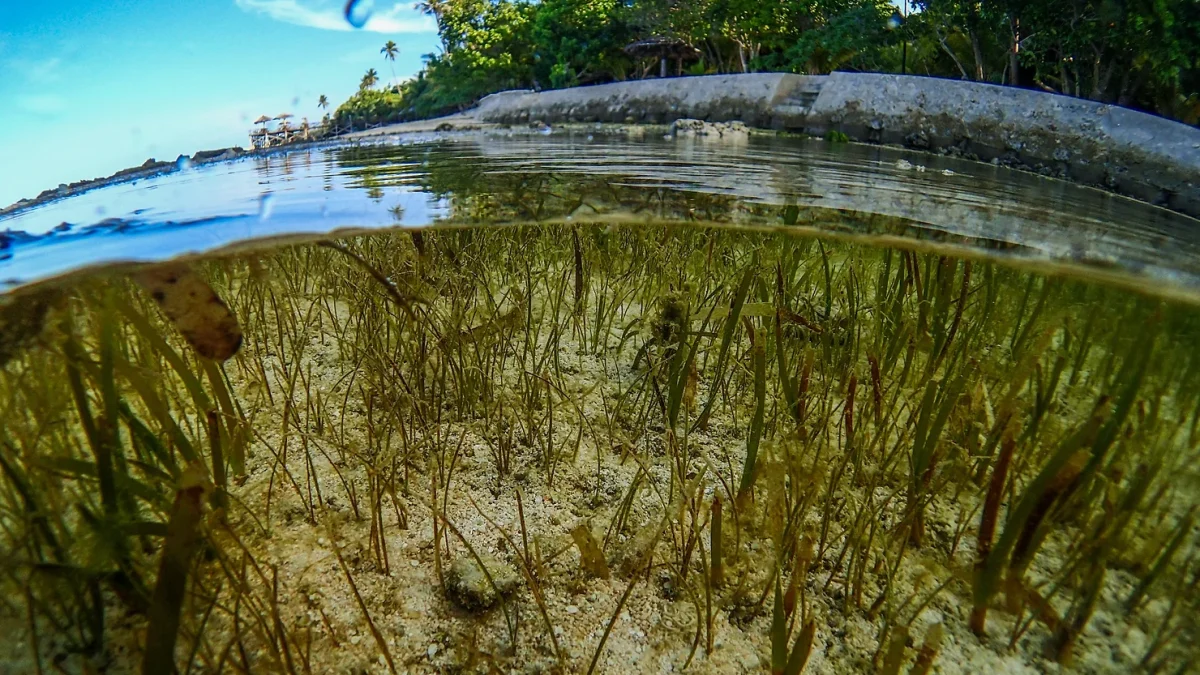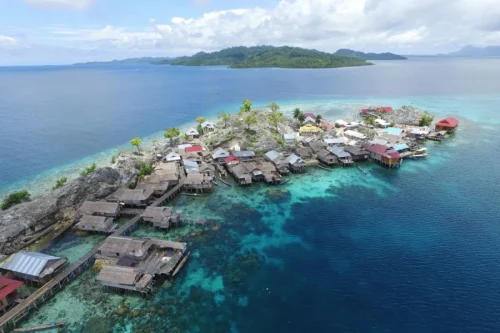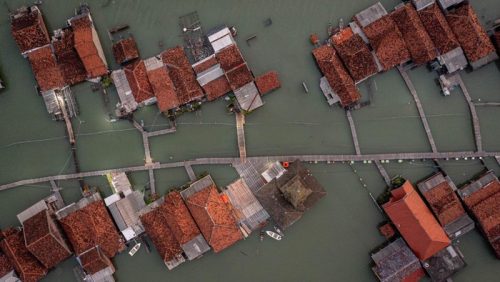The Urgency of Coastal Conservation: Safeguarding a Vital Ecosystem

Seagrass habitat in Wakatobi, South East Sulawesi, Indonesia (Photo Credit : Benjamin Jones)
Coastal areas are among the most important ecosystems for human life and environmental sustainability. Healthy and sustainable coastlines not only provide various ecological benefits but also have significant social and economic impacts. However, coastal areas are currently facing numerous challenges that threaten their sustainability and preservation.
- High Biodiversity
Coastal areas are habitats for unique and rare plant and animal species. Mangrove forests, coral reefs, seagrass beds, and mangrove swamps are examples of coastal ecosystems that are rich in biodiversity. Coastal conservation is essential for maintaining the sustainability of these species and preserving the overall balance of the ecosystem. The preservation of biodiversity in coastal areas also contributes to the sustainability of fisheries resources and ecotourism.
Indonesia, as an archipelagic country, is home to diverse and unique coastal ecosystems that showcase rich biodiversity. Here are some examples of coastal areas in Indonesia and their significance in terms of biodiversity conservation:
The Togean Islands
Togean Islands are known for their pristine coral reefs, seagrass meadows, and mangrove forests. These ecosystems harbor a high diversity of marine life, including endangered species such as dugongs and hawksbill turtles. Coastal conservation efforts in the Togean Islands are vital for preserving the biodiversity and providing sustainable livelihoods for the local communities dependent on fishing and tourism.

Togean Tojo Una-Una Biosphere Reserve in Central Sulawesi (Photo Credit : UNESCO)
- Protection against Natural Disasters
Coastal areas play a crucial role in protecting the mainland from natural disasters such as storms, tsunamis, and coastal erosion. Mangrove forests, for example, serve as natural "protectors" that can absorb wave energy and reduce the impact of floods. Without coastal conservation, we would lose this natural defense layer that can protect coastal communities from the threats of natural disasters. Therefore, coastal conservation is necessary to minimize the damages caused by natural disasters and protect human lives.
Coastal Erotion to “Rob” Flood
Java Island, being densely populated, has experienced significant challenges with coastal erosion. Coastal erosion occurs when the coastline recedes due to erosion, threatening coastal settlements and infrastructure. In several areas of Java Island, natural coastal protection, such as healthy mangrove forests and coral reefs, have been degraded due to various human activities. As a result, the impacts of coastal erosion have become more severe.
Many coastal villages in the Demak regency of Central Java have also faced the issue of "banjir rob" or tidal floods, leading to the submergence of these villages. The combination of coastal erosion and tidal floods exacerbates the challenges faced by these communities. Demak, located along the northern coast of Java Island, is particularly vulnerable to tidal floods due to its low-lying topography and proximity to the sea. These tidal floods occur when high tides coincide with heavy rainfall, causing coastal areas to be inundated. The submergence of villages in Demak and other coastal areas of Java Island has become a recurring issue, posing significant threats to the livelihoods and safety of the affected communities.

"Banjir Rob" in Dusun Timbulsloko, Desa Timbulsloko, Kecamatan Sayung, Kabupaten Demak, Jawa Tengah (Photo Credit : Aji Styawan/ANTARA FOTO)
- Provision of Natural Resources
Coastal areas are also important sources of natural resources for humans. Coasts provide resources such as fish, shrimp, shellfish, and seaweed, which are vital sources of protein and livelihood for millions of people worldwide. Coastal conservation is necessary to ensure that these resources can be utilized sustainably and remain available for future generations. Proper management and preservation of coastal ecosystems will support the sustainability of the fisheries sector and other economic sectors that depend on coastal resources.
- Tourism and Economy
Beautiful and well-preserved coastlines attract tourists, which, in turn, contribute to local economic growth through the tourism sector. Well-maintained coastal tourist destinations offer activities such as diving, snorkeling, and sailing, which provide economic benefits to local communities. Coastal conservation plays a vital role in supporting sustainable tourism sectors and providing livelihoods for coastal communities.
Wakatobi National Park
Wakatobi National Park in Southeast Sulawesi, Indonesia, is a prime example of a well-preserved coastal tourist destination. With its breathtaking coral reefs and clear waters, Wakatobi attracts tourists from around the world who come to experience activities like diving and snorkeling. The park's sustainable management and conservation efforts have not only protected its coastal resources but also brought economic benefits to local communities. Through tourism, residents have found employment opportunities and improved their livelihoods, contributing to the overall growth of the local economy. Wakatobi National Park exemplifies how coastal conservation supports sustainable tourism and provides a source of income for coastal communities.

Wakatobi Biosphere Reserve, Indonesia (Photo Credit : UNESCO)
- Climate Change and Carbon Sequestration
Coastal areas also play a crucial role in climate change mitigation. Mangrove forests and other coastal vegetation can absorb and store significant amounts of carbon. Coastal conservation can help reduce carbon emissions and mitigate the impacts of climate change. Additionally, coasts can serve as natural buffers, protecting the mainland from rising sea levels due to global warming.
Conclusion
Coastal conservation is a necessity for safeguarding this vital ecosystem. By preserving biodiversity, protecting against natural disasters, providing natural resources, supporting tourism sectors, and reducing the impacts of climate change, the preservation and conservation of coastal areas will offer long-term benefits to both humans and the environment. Coastal conservation efforts should involve active participation from governments, local communities, and various stakeholders. Only through strong cooperation and high commitment can we maintain coastal sustainability and pass it on to future generations.

